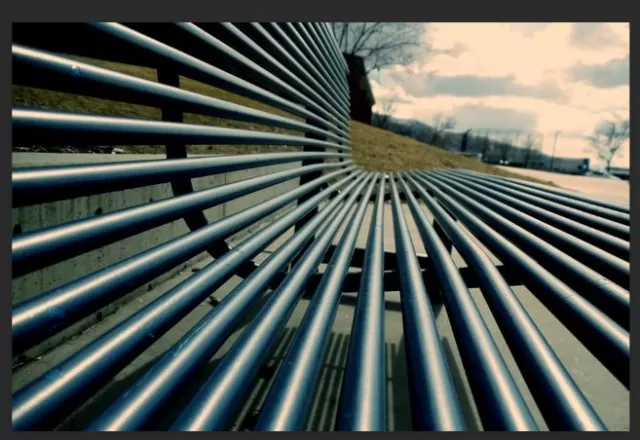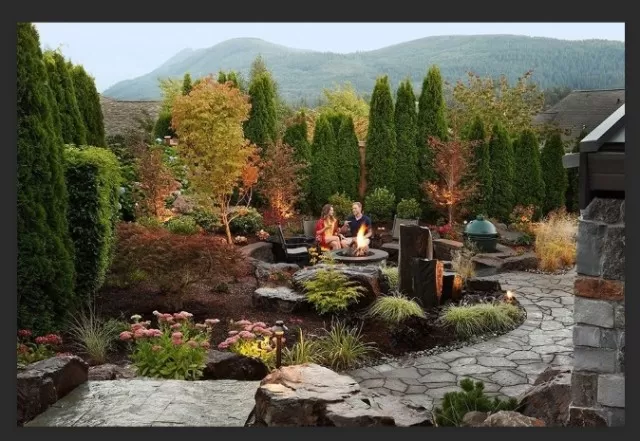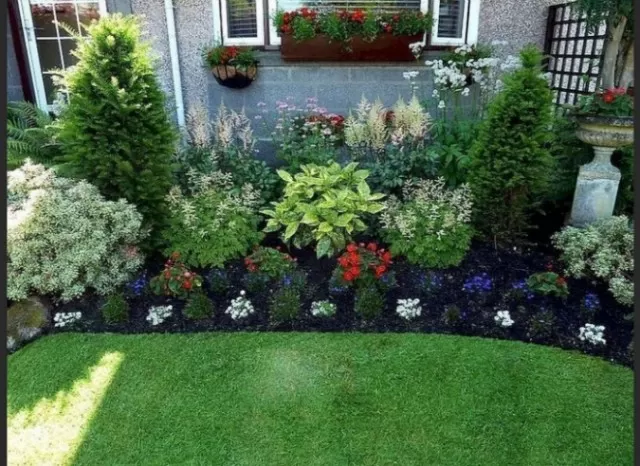10 Small Front Yard Landscaping Ideas (Part 1). Don’t underestimate the potential of your Small Yard. Even the tiniest Outdoor Spaces deserve deliberate landscape design, as they are natural extensions of our homes. In particular, the front yard plays a pivotal role, offering a first impression to both passers-by and visitors.
When brainstorming small front yard landscaping ideas, it’s essential to consider what elements will enable you to make the most of the space. Kirsten Rechnitz, owner of Eden Garden Design, wisely suggests starting by determining the primary purpose or intention for your yard. This vision will serve as the foundation and focal point for your overall design.
Perhaps your goal is to savor your morning coffee in a tranquil outdoor setting, or you might aspire to create a haven for native birds and bees. Alternatively, you may seek privacy from the road or dream of cultivating your own produce. Regardless of your objectives, ensure that every element you add, be it a pathway, shade tree, or favorite flower, is strategically placed to enhance your unique vision.
Let your small front yard be a canvas for thoughtful design, where every feature serves a purpose and contributes to the overall beauty and functionality of your outdoor space. With intentionality and inspiration, you can transform your compact yard into a captivating and purposeful extension of your home.
Maintain Clarity by Focusing on 1 or 2 Key Features

When it comes to crafting your small front yard, resist the urge to overcomplicate things.
Over-designing can quickly lead to a chaotic, overwhelming, and disjointed outdoor space. According to Kevin Lenhart, Yardzen’s design director, it’s crucial to remember that emphasis can’t be scattered everywhere.
Instead, opt for a select few focal points that will anchor your design.
These focal points might include your entryway, a standout specimen tree, or vibrant, towering accent plantings.
To create a harmonious and visually pleasing environment, ensure that each of these focal points has ample space to shine without being crowded or overshadowed by other elements.
Once you’ve established your focal points, proceed to incorporate medium and small design elements into your front yard.
Be deliberate in how each piece fits into the overall puzzle, and don’t hesitate to make adjustments as needed. By maintaining this clear and focused approach, you’ll achieve the perfect balance in your small front yard design.
Unlock Creativity with Constructed Elements
In your quest to create an eye-catching and functional small front yard, don’t restrict yourself solely to natural greenery.
Constructed elements, such as raised flower beds, trellises, and pathways, offer a world of possibilities. According to Brandy Hall, the founder and managing director of Shades of Green Permaculture, these structures often serve multiple purposes, making them a valuable addition to your landscape.
Consider raised bed planters, for instance.
They not only add visual interest but can also divide your outdoor space or provide seating for relaxation. Similarly, privacy trellises offer a dual benefit by enabling the growth of vine plants like berries and grapes while simultaneously creating shade and privacy.
Hall suggests taking a thoughtful approach by considering how you intend to use your outdoor space and identifying the design challenges you want to address.
Create a list of your envisioned uses and then explore how various constructed elements can meet multiple needs simultaneously. This way, you’ll infuse your small front yard with creativity and functionality, ensuring that every feature serves a purpose beyond mere aesthetics.
Symmetry or Asymmetry: Choosing Your Design Path

In the world of yard design, two fundamental approaches stand out: symmetry and asymmetry.
When you’re navigating the realm of small front yard design, you can rely on either of these principles as a starting point to shape your creative vision.
Symmetrical Design: Symmetry thrives on balance and order.
As explained by Rechnitz, if your front yard’s focal point is the entry door, and that door is centrally positioned in relation to your yard, a symmetrical approach would dictate that whatever you choose to plant on the left side of the door should mirror what’s on the right side. This meticulous alignment creates a more formal and structured garden design, where harmony and equilibrium are paramount.
Asymmetrical Design: In contrast, asymmetry celebrates spontaneity and informality.
In this style, you embrace the idea of asymmetry and deliberately deviate from mirroring elements. For instance, if you plant a large shrub on one side of the door, you might opt for a cluster of smaller plants on the other side.
This approach fosters a more relaxed and organic feel, allowing you to play with the elements and create a garden that feels dynamic and personalized.
Ultimately, the choice between symmetry and asymmetry hinges on your personal taste and the atmosphere you wish to cultivate in your small front yard.
Each approach offers its own unique charm, so select the one that resonates most with your style and vision for your outdoor space.
Emphasize Low-Maintenance Designs
Creating a stunning small front yard landscape doesn’t have to involve high maintenance.
As Kevin Lenhart, design director for Yardzen, highlights, a well-kept yard invariably steals the spotlight over a neglected one.
To achieve a low-maintenance front yard, start by choosing native plants that naturally thrive in your area’s light conditions, soil type, and climate.
These plants are typically more resilient and less demanding in terms of care, ensuring they flourish with minimal fuss.
Additionally, as discussed earlier, limiting the number of focal points can substantially reduce your maintenance workload and costs.
Fewer elements mean less time and effort spent on upkeep.
Drip irrigation systems are also an excellent investment for low-maintenance landscapes.
These systems deliver water directly to the plant roots, ensuring they receive the necessary hydration without wasting resources. This targeted approach is especially valuable in small front yards, where resources and space are limited.
Lenhart sums it up succinctly: “In small front yards, a small focal tree, an attractive path to the front door, and a few pockets of planting to accentuate thresholds is often all you need to offer a clean, attractive scene to people on the street.
” By focusing on these essentials, you can create a visually appealing, low-maintenance front yard that remains vibrant and lush with minimal effort.
Embrace Permeable Pathways for Function and Beauty

Pathways serve as both practical and aesthetic elements in your small front yard.
They break up the space, add dimension, and guide visitors through your garden. However, when it comes to pathway materials, concrete can be less than ideal, as it’s prone to wear and tear over time.
Instead, consider the advice of Molly Sedlacek, principal for ORCA, and explore the benefits of using brick pavers set in sand.
Sand-setting the pavers offers a unique advantage – it allows the pavers to adjust to the natural shifts and changes in your garden while maintaining their visual appeal.
This adaptability ensures that your pathways remain both functional and beautiful, even as your garden evolves.
If you already have a concrete pathway, you can infuse character and personality into it by tiling over it or introducing rocks or stepping stones.
These modifications can breathe new life into your existing pathway, making it more visually appealing and in harmony with your garden’s aesthetics.
When planning your pathway, consider its layout and design.
Whether it’s a straight path or a zigzagging trail through your front garden, it can connect a sidewalk or driveway to your front door. You can also add depth and interest by incorporating tiers, long landings, and low steps, creating a pathway that not only serves its functional purpose but also enhances the overall appeal of your small front yard.
*The information is for reference only.